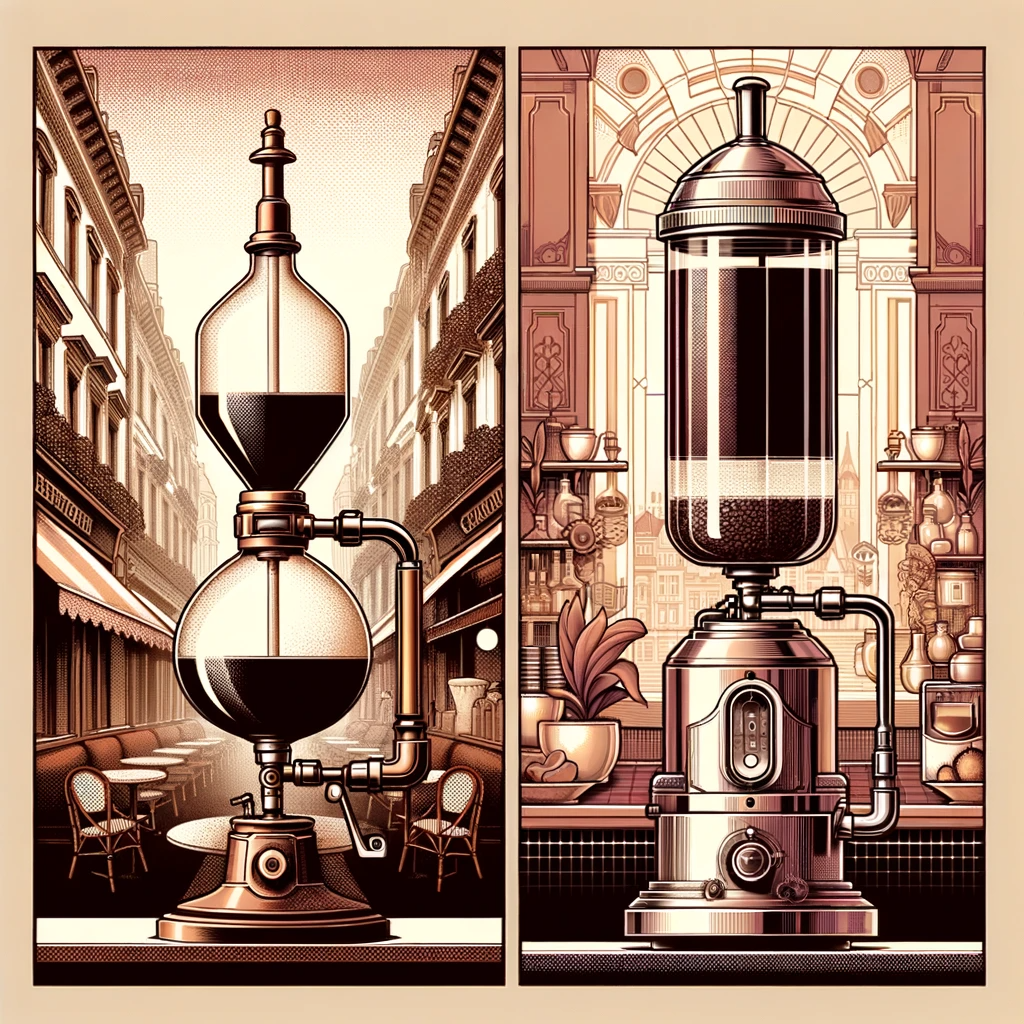As a child growing up in Portugal, the dining table was more than just a place for meals; it was a stage where the art of siphon coffee brewing came to life. The hand-cranked grinder would hum softly, releasing the rich aroma of freshly ground coffee into a wooden drawer. Then, the real magic began. The siphon brewer, with its twin glass chambers and elegant frame, was the star of the show. As the water ascended from the bottom chamber to mingle with the coffee grounds above, it was as if time stood still. The room filled with a heady aroma, a blend of science and art, anticipation and nostalgia. It was a sensory experience, a ritual that transcended the ordinary and touched the sublime. That mesmerizing process ignited a passion in me that has only deepened over the years.
The Genesis: A Tale of Innovation and Elegance
|
The siphon coffee maker, a marvel of physics and aesthetics, has a history as rich as the brew it produces. The earliest known patent for a siphon brewer was filed by Loeff of Berlin in the 1830s. However, it was Marie Fanny Amelne Massot, better known as Mme. Vassieux of Lyons, France, who designed and patented the first commercially successful vacuum brewer in 1840. Her design featured two glass "balloons" held by a frame, adorned with a metal crown and a spigot for serving from the bottom vessel. This was not just a coffee maker; it was a centerpiece, a conversation starter, and a work of art. |

|
What set the siphon apart from other brewing methods of the time was its ability to fully immerse the coffee grounds, allowing for a more even extraction and a richer, more nuanced flavor profile. The vacuum created during the brewing process also minimized the contact between the coffee and air, preserving the freshness and complexity of the flavors.
The American Chapter: Silex and Beyond
| Fast forward to the early 20th century, when vacuum brewers made their way to the United States. In 1910, Mrs. Ann Bridges and Mrs. Sutton, sisters from Salem, Massachusetts, filed a patent for a device they called the "Silex," made of Pyrex glass. The design was simpler but effective, and it set the stage for the vacuum brewers that followed. A treasure trove of patents and designs from this era, as documented here, showcases the extent of innovation this brewing method has seen. |  |
Balance Brewers: The Showstoppers
No discussion of siphon coffee history would be complete without mentioning balance brewers. These brewers, popular at European court functions during the mid-1800s, automatically extinguish the flame on the burner when the water chamber is empty, thanks to an elegant combination of balance and a spring-loaded lid.
The Modern Renaissance
Today, companies like Hario and Yama are commonly found in specialty coffee shops and they have contributed to the renaissance of siphon coffee. The method has even spawned competitions like the Japan Siphonist Championship and the World Siphonist Championship. With the advent of new heat sources like infrared lamps and gas lamps, siphon coffee is experiencing a renaissance, capturing the attention of baristas and coffee enthusiasts around the world.
The Bernoulli - A Symphony of Past and Present
The Bernoulli siphon brewer embodies the essence of this rich history while adding modern conveniences. Its retromod design pays homage to the elegance of past brewers, and its use of exclusive materials like noble wood and hand-blown glass adds a touch of luxury. It's not just a coffee maker; it's an experience, a journey through time, and a tribute to the art and science of brewing.
So, the next time you brew a cup of coffee, remember, you're not just making a beverage; you're participating in a centuries-old tradition of innovation, elegance, and passion. Cheers!

